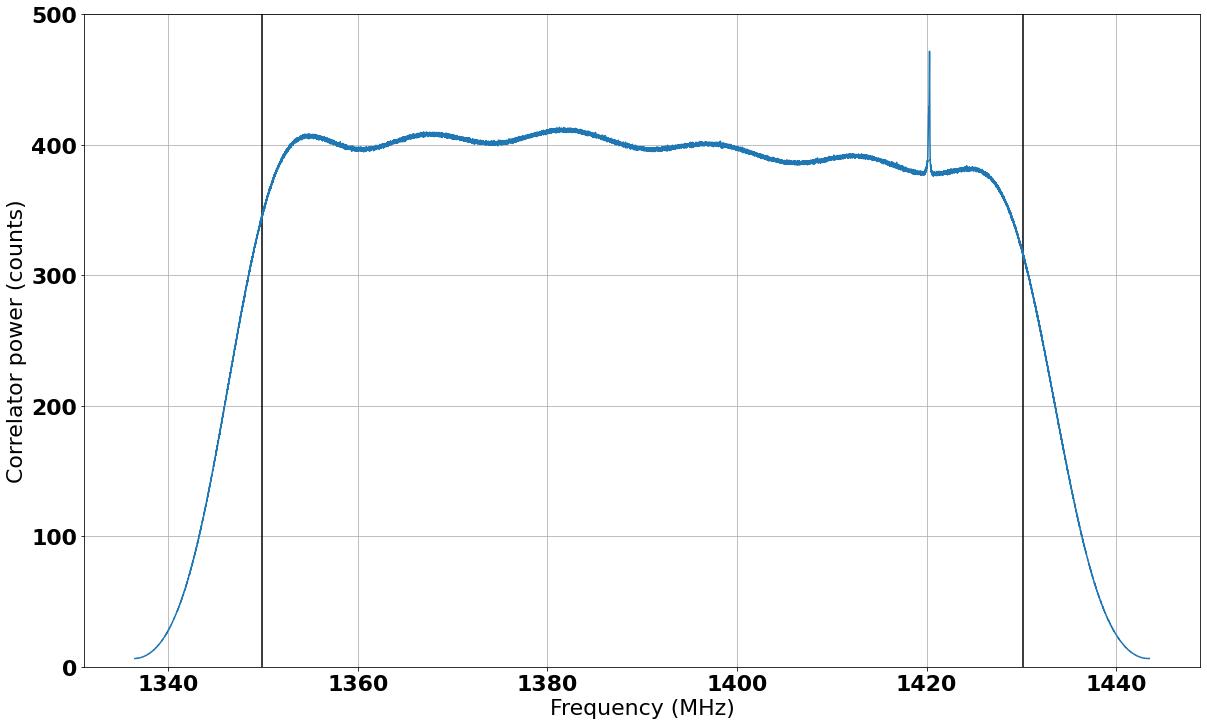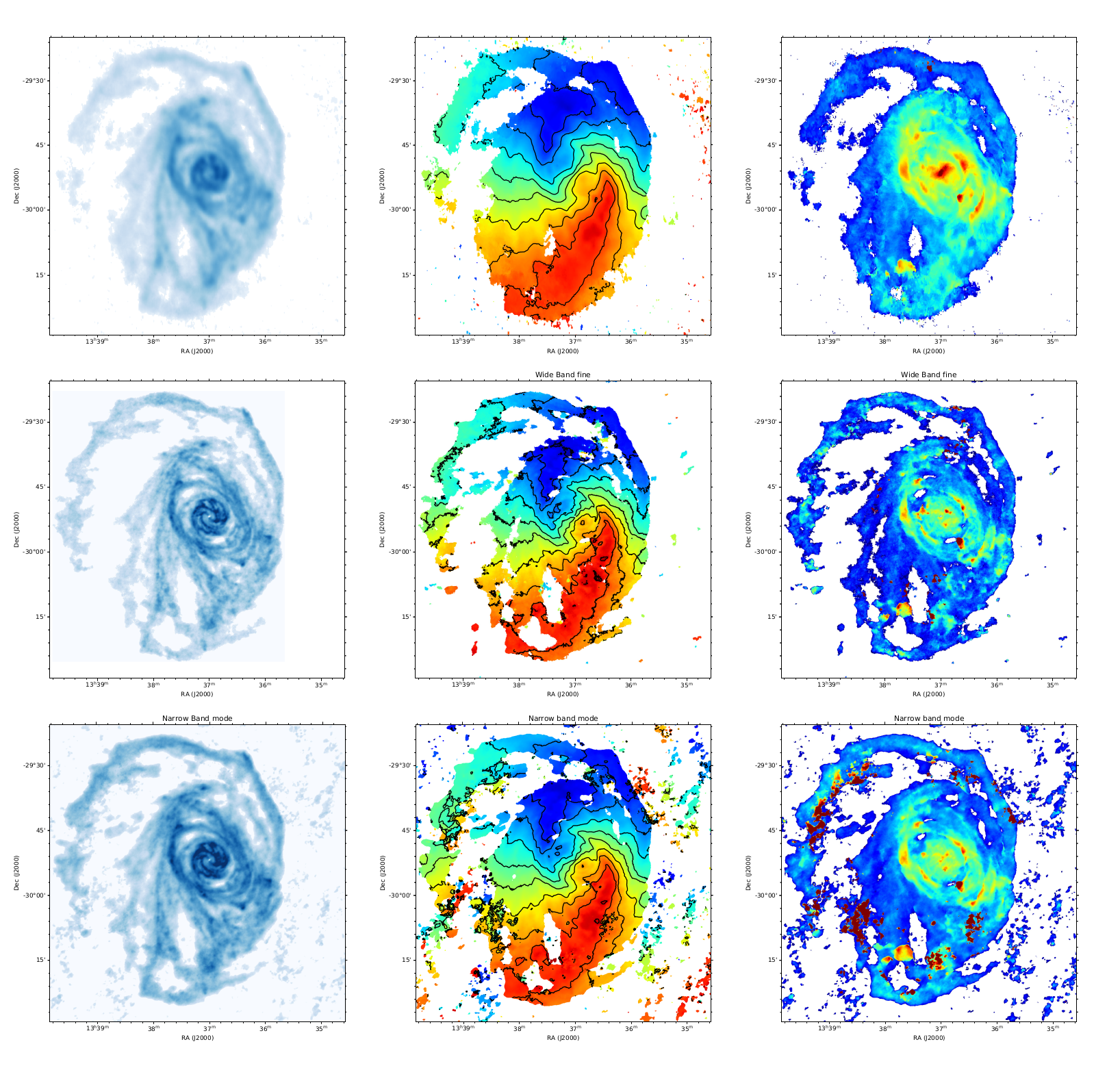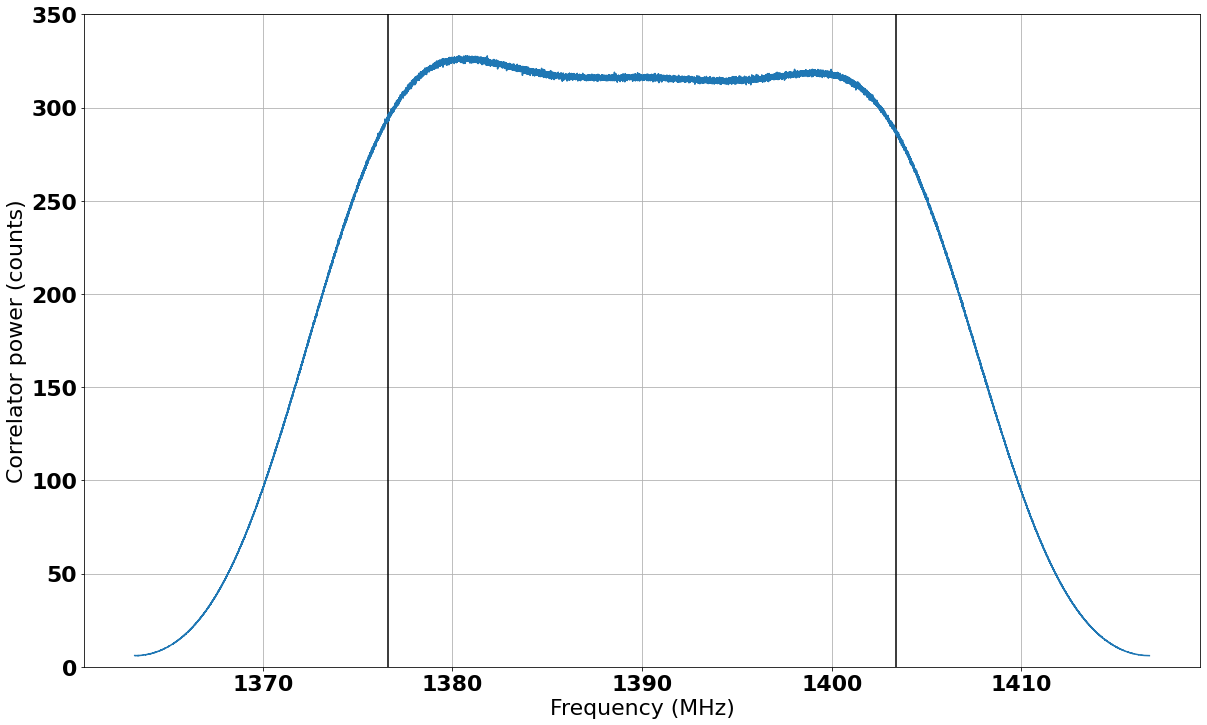Two ‘zoom’ modes, designated NE_107M and NE_54M, are available for higher resolution spectral line observations.
Only one zoom window can be activated. It runs concurrently with the wideband 4k channel correlator mode, providing simultaneous wideband continuum observations.
The filter roll-off has a width of ~13.5 MHz for both modes, thus ~27 MHz of the digitized band is not usable. Please see the bandpass response plots for each modes in the sections below.
At the moment, the spectral imager does not run on narrowband modes. Calibration solutions are produced, however, and may help to reduce the processing time. Note that wideband continuum (4K mode) images are produced and may be useful for continuum subtraction. |
The SDP calibration pipeline may flag strong spectral lines such as the Galactic HI line and masers. Users are advised when converting to MS to only use the ‘static’, ‘data_lost’, and ‘cam’ flags. |
This mode has a digitized bandwidth of 107 MHz with 32k channels (with ~13.5 MHz rolloff on either side, giving an effective bandwidth of ~80 MHz – see Figure 1). This gives a channel width of 3.3 kHz or 0.7 km/s at 1.4 GHz. It is being successfully used for the L-band LSPs MHONGOOSE and Fornax.

In Figure 2 below we show the results of observations of M83 in both wideband and 107 MHz narrowband mode. The correlator is performing as expected and the expected sensitivity is achieved.

For more details see the commissioning reports from the Large Survey Projects Fornax and MHONGOOSE, which have been conducting extensive observations using this mode since August 2020:
MHONGOOSE commissioning: narrowband observations of NGC 5068
MeerKAT 32k zoom mode commissioning: NGC 1365
Unfortunately the filter response causes 50% of the NE_54M mode band to be lost, giving an effective bandwidth of 27 MHz. Please see typical bandpass response in Figure 3 below. |
Users interested in observing hydroxyl lines should note that while the 1665- and 1667-MHz lines can be observed simultaneously, the bandpass response is not wide enough to encompass the 1612 MHz line as well. The centre frequency cannot be adjusted during an observation.

This mode was offered on a ‘shared-risk’ basis during the 2022 Open Call for proposals. No issues have been reported.
Additional tests utilizing the narrow OH maser lines have established that:
The flux of narrow lines can be recovered, even when unresolved at the spectral resolution of the system
There is no dependence on the tuning of the centre frequency of the band